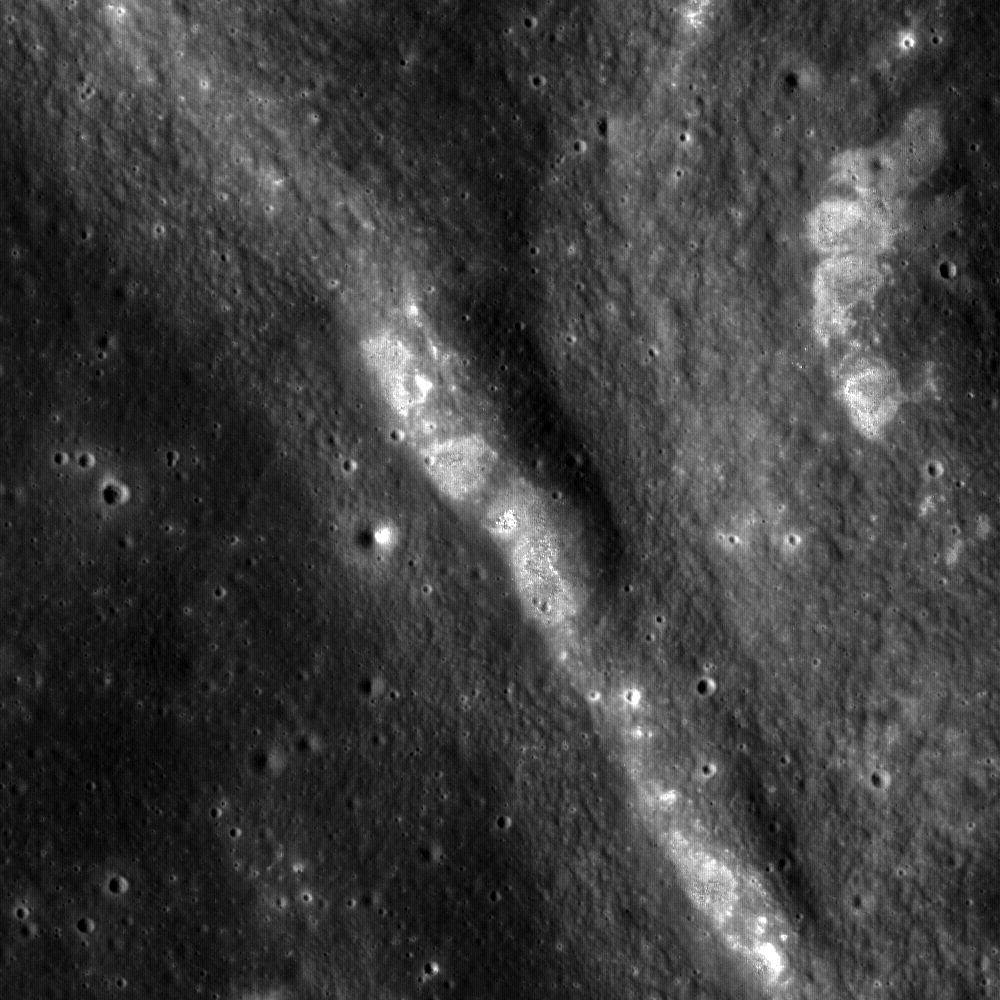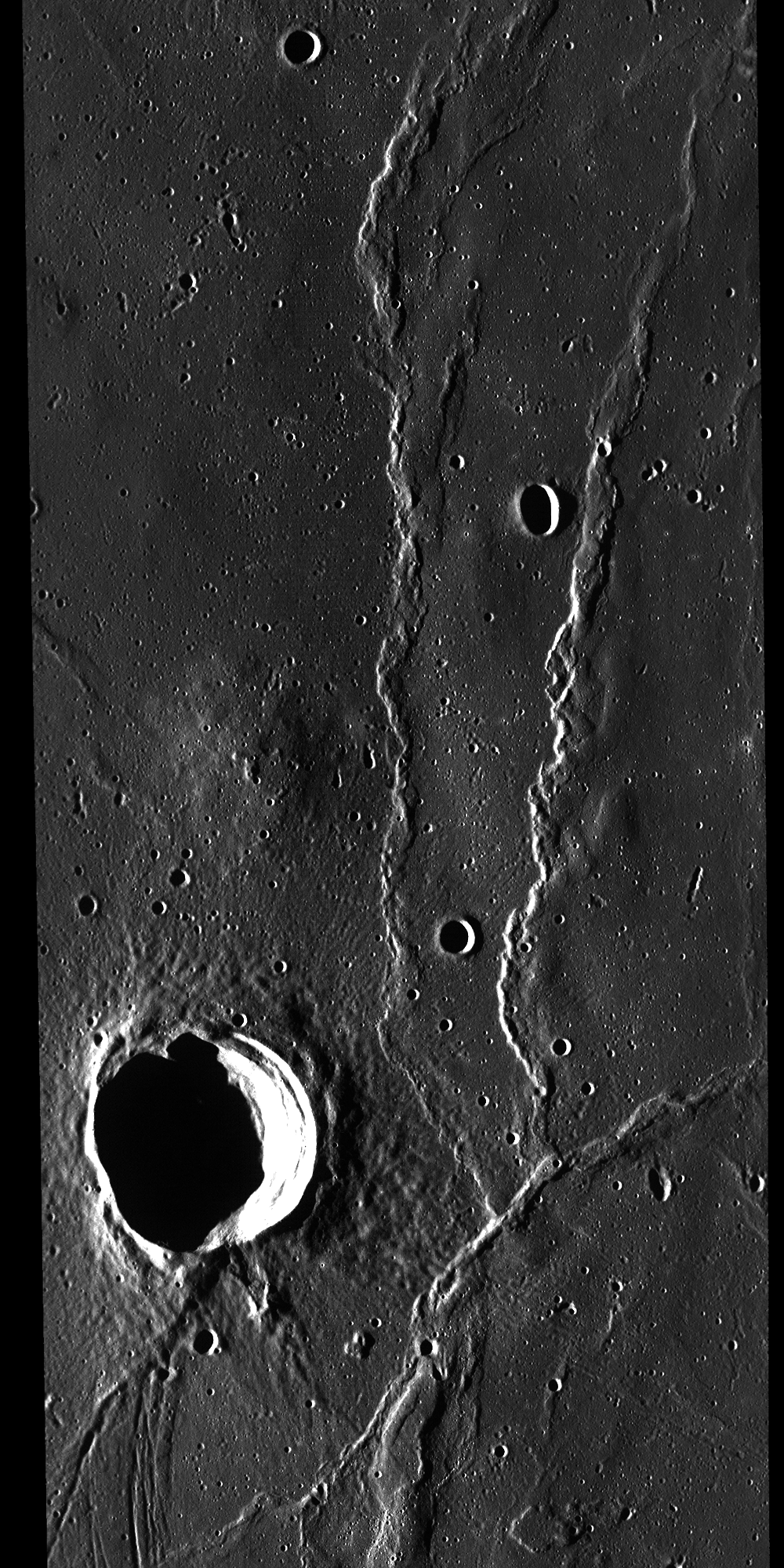
The Constellation region of interest in Mare Tranquillitatis is a good example of a site that combines operational benefits with fascinating geologic features. An equatorial nearside location where landings would be fairly straightforward, the most obvious feature that draws your eyes in this region of interest is the dramatic wrinkle ridge that dominates the landscape. Wrinkle ridges like these are common on lunar mare surfaces and have long been a subject of interest to lunar scientists.
Lunar wrinkle ridges can be hundreds of kilometers long, tens of kilometers wide, and hundreds of meters high. Read more in Wilhelms, 1987! They can have a sinuous or linear appearance with asymmetric cross-sections. In other words, the feature that you see could easily be made up of a smaller ridge superposed on a broad rise.
Lunar wrinkle ridges are found in the mare basalt deposits that filled the giant impact basins on the Moon. Frequently, wrinkle ridges are oriented concentric to large impact basins. Loading of the basin floor with multiple eruptions of mare basalts causes the formation of wrinkle ridges in the basin center and graben along the mare margins (see figure below). The tremendous weight of the newer basalt layers then causes the center of the basin to sag. As the basin center sags, the basalts slide towards the basin center causing compression that results in folding and faulting of the basalt. The sagging of the basin under the weight of the basalt also causes the opening of graben along the edges of the basalt layers.

Idealized cross-section through an impact basin that filled with three episodes of mare basalt eruptions [Hiesinger, 1999, PhD dissertation]. Loading of the basin floor with mare basalts causes the formation of wrinkle ridges in the basin center and graben along the mare margins.
We also know, thanks to the samples collected by the Apollo 11 astronauts, that the mare basalts in this region are rich in titanium. Study of the Apollo samples has shown that it is relatively straightforward to extract resources (especially oxygen) from titanium-rich lunar soils. Using local resources will increase the capability and reduce the cost of future lunar exploration.
For more information on LROC's observation campaign for the Constellation Program regions of interest read this Lunar and Planetary Science Conference abstract, and visit the LRO Science Targeting Meeting website (look for the baseball card summary sheets for each site: part 1, part 2).
Explore the wrinkle ridges in Mare Tranquillitatis! Or browse other Featured Images containing wrinkle ridges near Montes Teneriff and northwest of Mare Imbrium.
Published by Mike Zanetti on 27 April 2010
